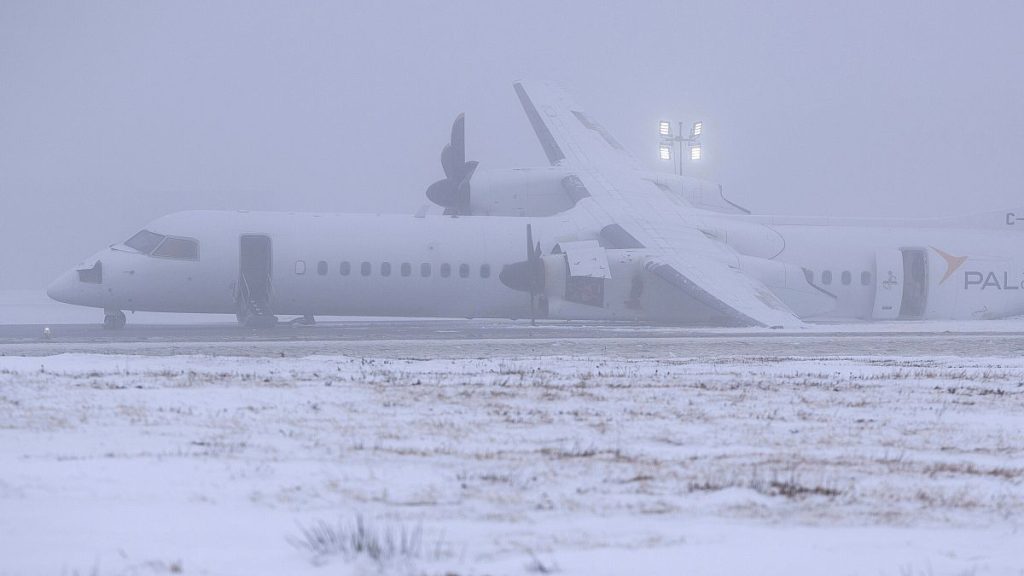On Saturday night, at approximately 9:30 pm, an Air Canada Express flight, operated by Pal Airlines, experienced a landing incident at Halifax Stanfield International Airport in Canada. The Bombardier Q400 aircraft, arriving from St. John’s, encountered a suspected landing gear issue upon touchdown, preventing it from reaching the terminal. This incident led to the temporary suspension of all flight operations at the airport while authorities assessed the situation and ensured the safety of the airfield.
According to passenger accounts, the plane skidded off the runway during landing, tilting onto its left side. As the pilots struggled to bring the aircraft to a complete stop, a portion of the plane caught fire. Emergency responders, including the Nova Scotia Royal Canadian Mounted Police and paramedics, promptly arrived at the scene. While Air Canada initially reported no injuries, the RCMP later indicated that some passengers sustained minor injuries.
Following the incident, airport authorities initiated a comprehensive assessment of the airfield to ensure its operational integrity. One of the airport’s runways subsequently resumed regular operations, allowing for the gradual resumption of flight activities. The cause of the incident remains unknown and is currently under investigation by relevant authorities, including Air Canada.
This incident highlights the critical role of robust safety protocols and emergency response mechanisms in aviation. The swift response of airport personnel, emergency services, and the flight crew played a crucial role in mitigating the potential for more severe consequences. The investigation into the incident will undoubtedly focus on determining the root cause of the landing gear issue, as well as assessing the effectiveness of the emergency procedures implemented. This information will be invaluable in preventing similar incidents in the future and enhancing overall aviation safety.
The incident underscores the inherent risks associated with air travel and the importance of continuous improvements in safety measures. The collaborative efforts of airlines, airport authorities, and regulatory bodies are essential in maintaining and enhancing the safety and reliability of air transportation. By thoroughly investigating incidents like this, the aviation industry can identify potential vulnerabilities and implement corrective actions to minimize future risks.
Furthermore, the incident serves as a reminder of the dedication and professionalism of flight crews and emergency responders. Their training and preparedness are instrumental in ensuring the safety and well-being of passengers in such critical situations. The ability to effectively manage emergencies and evacuate passengers safely is a testament to the ongoing efforts within the aviation industry to prioritize safety above all else.














